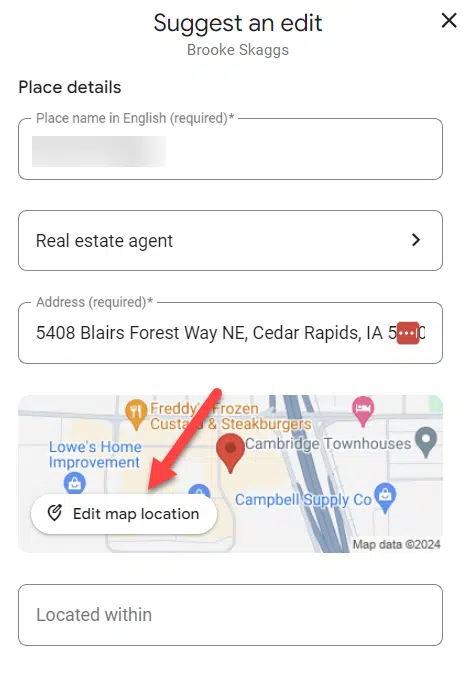If you need to make your WordPress website SEO-friendly, then the following tips, tricks, and approaches are for you. By implementing them, you can ensure a high ranking across search engines and increase traffic and conversions.
Let’s look at all the primary WordPress SEO strategies one by one.
Select a well-founded Hosting Provider
When a WordPress site loads faster and executes user-request within a minimal time, search engines rank it on top. Selecting a reliable WordPress hosting provider can also model your website faster. Hosting the site on a server with high compatibility, larger bandwidth, and 24/7 uptime boosts the SEO.
In addition, you must consult with a WordPress development agency to help you select the best hosting provider. And ensure that the provider offers CDN (Content Delivery Network) facility. Moreover, you can also minify the JavaScript, CSS, and HTML files to let the server effortlessly transfer the website data to the user’s browser.
Use WordPress SEO Plugins
WordPress offers a comprehensive and exclusive range of SEO plugins, aiding in viewing site analytics, correcting them, and improving overall optimization. It would help if you also integrated such plugins while getting WordPress design and development services. Additionally, you should consider the following two plugins recommended by digital marketers for WordPress sites:
1: All-in-one SEO (AIOSEO)
As the name defines, AIOSEO provides all the necessary functionalities to optimize the website. Its prominent features include:
- On-Page SEO Analysis through adding title tags, keywords, and meta descriptions
- Helps to increase traffic by providing schema markup support
- Aids in automatics generation of XML sitemap
- Provides suggestions to interlink posts
- Helps to optimize WooCommerce-based online stores
- Perform analysis across the complete website and execute audits
BesidesIOSEO offers more such high-end features, which you can explore by integrating into your WordPress site.
2: Yoast SEO
Yoast is another top-rated SEO plugin for WordPress sites. It’s available in two versions – free and pro (paid). You can select it for optimizing your site by leveraging the functionalities, such as:
- Key-phrase optimization
- Support for inter-linking
- Pre-built blocks for internal and external linking
- Avoidance of 404 errors through redirect manager
- Integration with Semrush, Wincher, Elementor, and WordProof
Maintain Website Security
Maintaining security plays a vital role in making WordPress websites SEO-friendly. Besides applying marketing and content strategies, technical SEO is an approach many companies need to learn.
When you create a WordPress website, always prioritize its security. It helps you with retaining data confidentiality and integrity, as well it helps in refining the site’s SEO. Further, below are some security mechanisms that you must configure:
- Utilize an SSL/TLS certificate to establish an encrypted communication path between the server and the browser.
- Enable HTTP3 protocols
- Always check that all webpages are loaded using HTTPS protocol instead of HTTP.
- Utilize TLS 1.3 digital certificate
Utilize an Optimized WordPress Theme
Website optimization starts from the very beginning when you need to select a WordPress theme. The theme’s structure supports building a strong SEO foundation, enabling search engines to crawl and find relevant content on the site.
And, if you have partnered with a WordPress development agency, such as Positiwise Software Pvt Ltd, you can be ensured of SEO-friendly theme utilization. In addition, you can avail of the custom theme development services from the technology partner to build a site, appropriately fulfilling technical, business, and SEO requirements.
Additionally, select a clean theme with minimal or no heavy animations, as it will increase the speed. As a result, users will prefer your site, and it will start gaining momentum across search engines.
Create Headline Tags
Headings are crucial for every WordPress page and blog post. When a crawler or visitor undergoes the site, the heading gets attention at first. It offers an idea of what content or information is provided further. And then, the visitor decides whether to remain on the same site or navigate to some other.
Therefore, keep a simple and attention-gaining headline whenever you create content for a blog or webpage. With the help of the WordPress editor, headings from 1 to 6 can be easily put on a page/blog post. As a result, the content will look clean and overall text will get converted to a smooth read.
Generate a Sitemap
XML Sitemap doesn’t directly contribute to optimizing WordPress websites for search engines. However, it provides a streamlined structure to crawlers for going through every webpage and analyzing its content. Creating a sitemap allows you to easily navigate search engine components to discover and rank authentic content.
Furthermore, if you don’t know the procedure to create a sitemap. Then, you can use the AIOSEO plugin, which offers tools to generate a sitemap within minutes. In addition, you can redirect to the following URL to find your site’s URL:
http://YourWebsiteDomain.com/sitemap.xml
And once you create the sitemap, submit it to Google to let crawlers do their work.
Publish Blogs Containing Relevant Keywords
When accelerating your site’s reach, publishing blogs is the most prominent method. However, before you write or publish a blog, ensure to complete the following checklist:
- The blog’s heading must be attention-grabbing and simple
- The blog content must contain short-tail, long-tail, competitor, product, and other relevant keywords.
- Content must get written, proofread, and edited by a subject matter expert.
- AI-written content must not get published on your site.
- The grammar, tone, and structure must be correct.
- Accurate information should be included in the blog.
- Don’t copy and paste from other sites.
- In addition, focus on quality rather than generating quantity. If your blog content is authentic, search engines will start ranking it.
Upload Quality Content Only
Content doesn’t only refer to blogs or text. Images, graphics, and videos on your website are also considered content. And it would help if you focused on optimizing them to contribute to overall efficiency and SEO compliance.
While uploading graphics, images, and videos, ensure their size is not too big, and the format is compatible with all web browsers. Otherwise, the media will take time to load, which can downgrade the site’s speed and ranking. In addition, you must provide a description and alternate text (alt text) for every image. It aids the website crawlers in understanding the images and improving their SEO scores.
Also, it is recommended to use gallery plugins for uploading videos and images for better SEO optimization.
Comments or No Comments
Numerous organizations use WordPress for blogging and enable visitors to write comments. However, before enabling commenting functionality, you should focus on its impact on SEO.
According to SEO professionals, spelling mistakes, spammy comments, and grammatical errors in comments can negatively affect websites. And if you remove the comments, it also does the same work.
Thus, you should decide whether you want to enable comments or not. Also, this decision must be taken before you publish the site and starts optimizing it. Otherwise, instead of ranking up, your site will rank down. It solely depends upon your organization’s projection and goals to turn comments on or off from the Settings -> Discussion option.
However, consulting with a WordPress development agency can provide clear insight if you need clarification about the comments.
Enable Breadcrumbs and Modify Website Permalink
Breadcrumbs are one of the essential components of a WordPress website. It supports increasing user satisfaction rates, and Google also prefers them while ranking. Due to breadcrumbs, search engines effortlessly understand the site structure, helping them to crawl across pages and blogs quickly.
Additionally, breadcrumbs can help users to navigate between web pages seamlessly. It shows them the correct way to move further and back, reducing friction and lowering the bounce rate.
Further, you must create a visitor-readable permalink of the posts and pages. For example, if you create and publish a blog on the topic of SEO strategies, its URL must contain the heading or keyword. In WordPress, you can easily modify the permalink by going to Dashboard -> Settings -> Permalink -> Post Name.
Add Schema Structure Data To Your Website
Schema structure means FAQs, reviews, and all such content, telling more about the information on a specific webpage/blog. By inserting schema markup, you can get a high click-through rate and top rank in Google.
When a search engine finds unique HTML code about such content, it treats it as authentic and prefers it while ranking. And that’s how end-users see much larger results with ratings, FAQ answers, and similar when they search. Therefore, you prefer manually adding schema markup or using a plugin like AIOSEO. As an output, more people will prefer your site, organically increasing traffic, revenue, and ranking.




